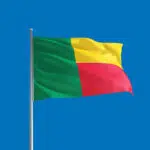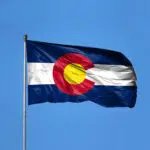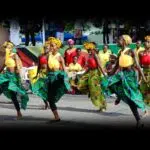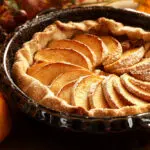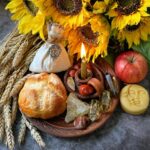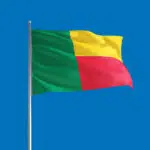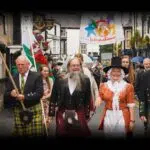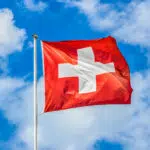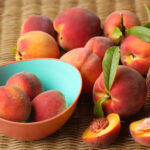The National Eisteddfod is held in Wales during the first week of August. This year it falls from August 1 to 8. It’s an annual festival that lasts for eight days. Alternating between north and south Wales, the ‘Maes’ (venues where events take place) change every year, attracting hundreds of thousands of visitors and hosting hundreds of stands and stalls. This festival is the showcase for music, dance, literature, visual arts, and original performances. It’s an inclusive and popular festival, inviting Welsh learners and those who don’t speak Welsh. So, if you are a non-Welsh speaker, you’re always welcome.
History of National Eisteddfod
The history of the National Eisteddfod can be traced back to a competition when the Cardigan Eisteddfod was held in 1176 by Prince Rhys ap Gruffydd, the ruler of the Welsh Kingdom at the time. In 1861, the first official National Eisteddfod took place in Aberdare. The Eisteddfod has been held annually since, except for 1914, the beginning of World War I. In 1940, during World War II, the festival did not take place due to fear of enemy attack, so an Eisteddfod radio program was broadcast by the B.B.C. instead. Since 1950, a strict rule requires all activities to be in Welsh, except for settings of the Mass in Latin.
The National Eisteddfod festival changes its Maes (Welsh for Field) every year, alternating between north and south Wales. The festival attracts around 150,000 visitors and more than 6,000 competitors. Being well-received and offering opportunities to compete, the festival attracts thousands of Welsh language learners and those who do not speak the lingo. But don’t worry, translation services and bilingual information are available. Also, there is a center for learning Welsh at the Maes. Although the Welsh language is an essential part of National Eisteddfod, the festival is more than just a Welsh language event.
There are music, dance, literature, visual arts, original performances, family activities, and various kinds of competitions as well as more than 250 stands. Wales’ leading writers, poets, and musicians competed in the festival, and numerous performers appeared on a national stage for the first time. National Eisteddfod uplifts the language, the culture, and the local economy. And, it brings people together of all ages and backgrounds, from different parts of Wales, through volunteering opportunities.
National Eisteddfod timeline
Prince Rhys ap Gruffydd hosts the Cardigan eisteddfod.
The first official National Eisteddfod is held in Aberdare.
There is no festival, so an Eisteddfod radio program is broadcast by the B.B.C.
Since this year, it’s required that all activities must be in Welsh.
National Eisteddfod FAQs
What does ‘eisteddfod’ mean in Welsh?
It is the Welsh word for ‘session.’
What is the Welsh name for Wales?
The Welsh name for Wales is ‘Cymru.’
What is the most common Welsh surname?
The most common Welsh surname is Jones (170,633), followed by Davies (111,559), and Williams (110,404).
National Eisteddfod Activities
Join in the festival
It’s obvious, right? If you’re reading this, you need to get ready for the festival, either as a spectator or a competitor. If you’re going to compete, go to their website for the necessary information.
Volunteer or donate
The National Eisteddfod often provides volunteering opportunities. Or, you may want to donate to the Eisteddfod local fund. Check out their website to find out more.
Learn the language
If you are a non-Welsh speaker and planning a trip to the festival, you may want to try learning the language. It’s the best time to learn a language in a fun environment.
5 Interesting Facts About Wales You Need To Know
Jack Daniel’s originated from there
Jack Daniel’s grandfather, Joseph ‘Job’ Daniels, was from Aberystwyth, West Wales.
The Royal Family always used Welsh gold
For generations, the British Royal Family always has used Welsh gold for their wedding rings.
Highest mountain is named after a Welshman
The highest mountain in the world, Mount Everest, was named after a Welshman, George Everest.
It has more sheep than humans
There are 9.5 million sheep in Wales, while the human population is 3.1 million.
It’s home to the U.K.’s smallest city
St. Davids, the smallest city in the U.K., is located in Pembrokeshire, Wales.
Why We Love National Eisteddfod
It’s fun
Yeah, it’s fun. It’s a festival, you know. You’ll find music, dance, poetry, visual arts, and original performances, and there’s even a Science and Technology Pavilion for kids with experiments, fun, and games.
It appreciates the language
The Welsh language is an essential part of the festival. For a non-Welsh speaker who wants to learn the language, it’s the right time.
It uplifts the local economy
There will be more than 250 stands at the festival. Supporting your local community is awesome, right?
National Eisteddfod dates
| Year | Date | Day |
|---|---|---|
| 2024 | August 3 | Saturday |
| 2025 | August 1 | Friday |
| 2026 | August 1 | Saturday |





